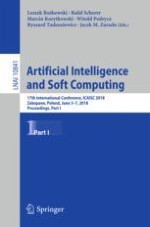2018 | OriginalPaper | Buchkapitel
Company Bankruptcy Prediction with Neural Networks
verfasst von : Jolanta Pozorska, Magdalena Scherer
Erschienen in: Artificial Intelligence and Soft Computing
Aktivieren Sie unsere intelligente Suche, um passende Fachinhalte oder Patente zu finden.
Wählen Sie Textabschnitte aus um mit Künstlicher Intelligenz passenden Patente zu finden. powered by
Markieren Sie Textabschnitte, um KI-gestützt weitere passende Inhalte zu finden. powered by
